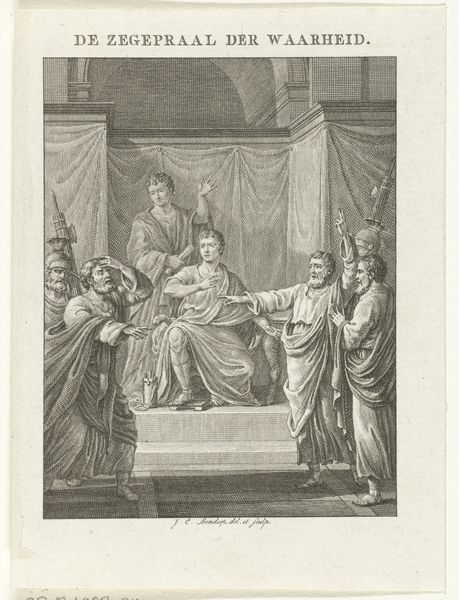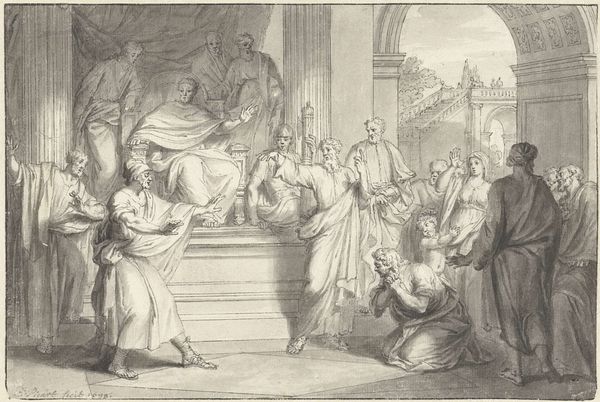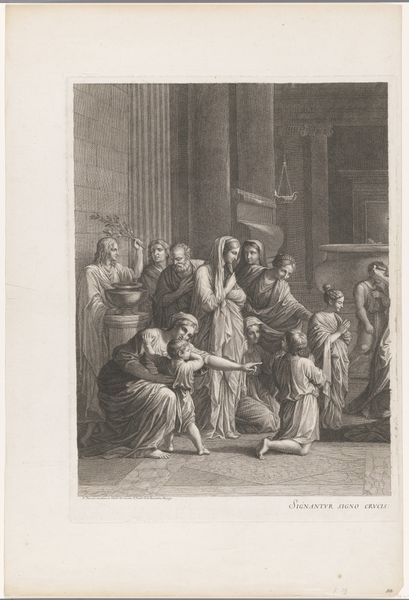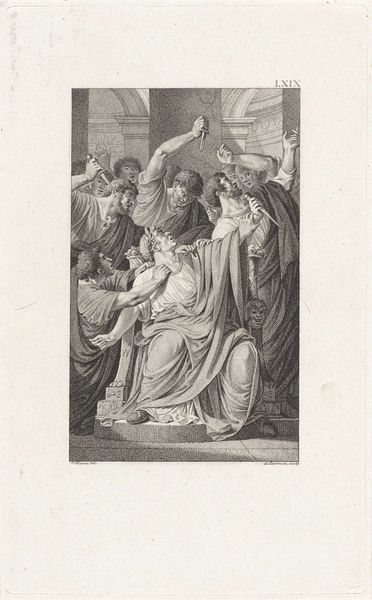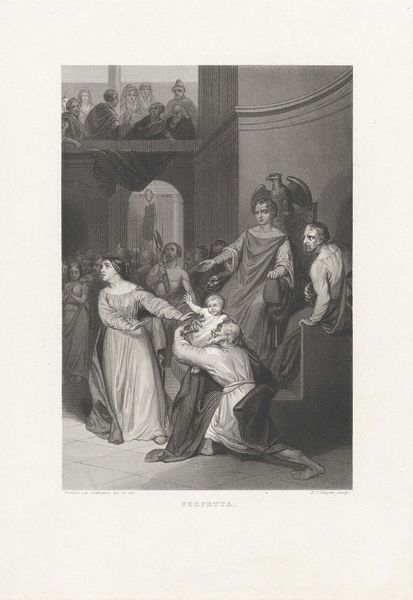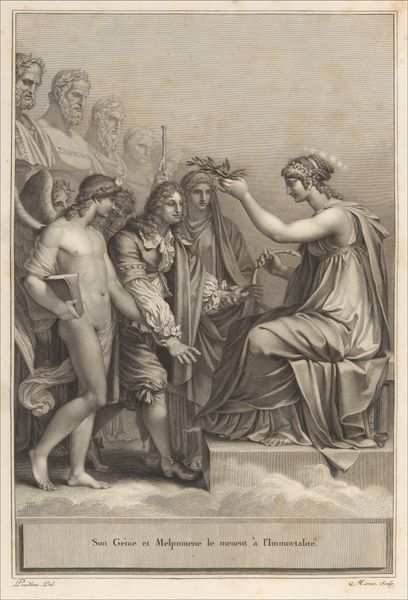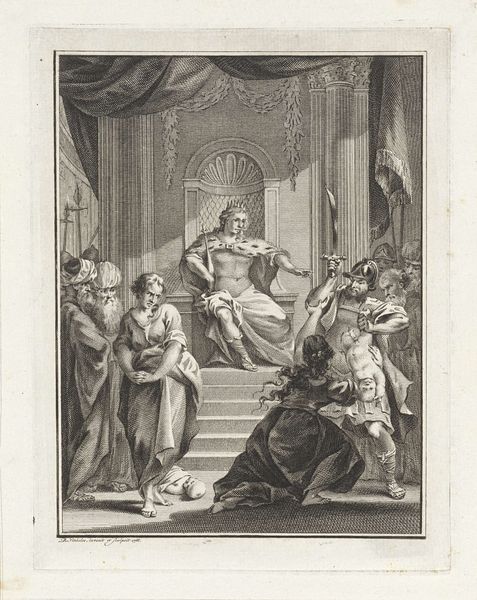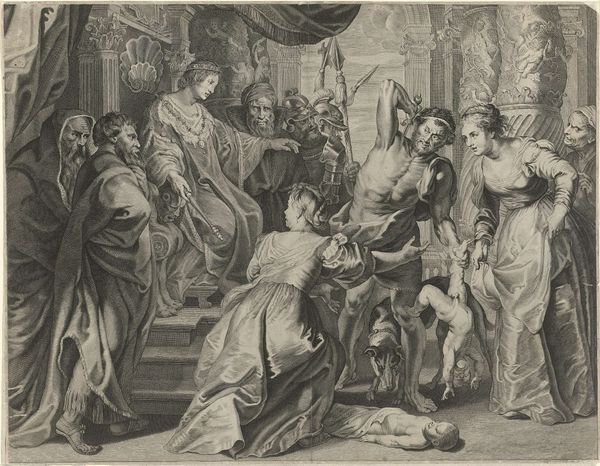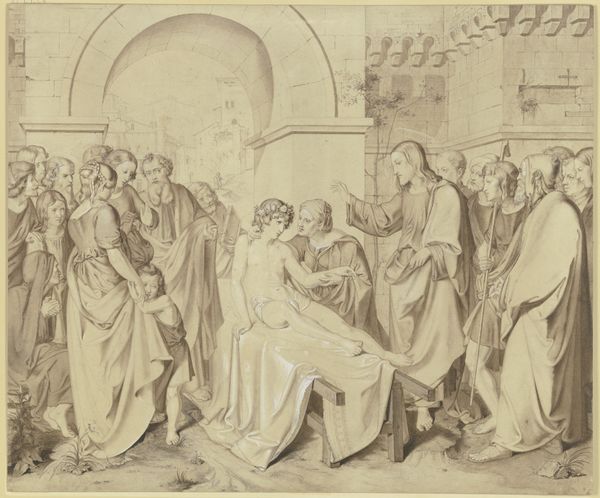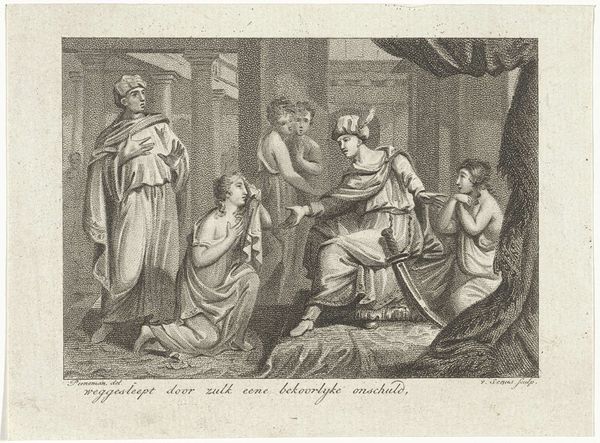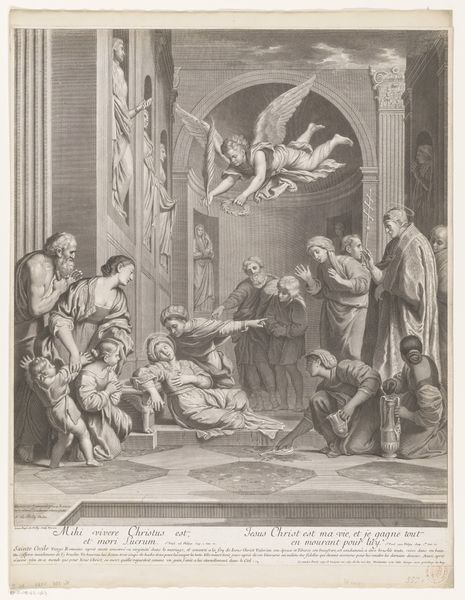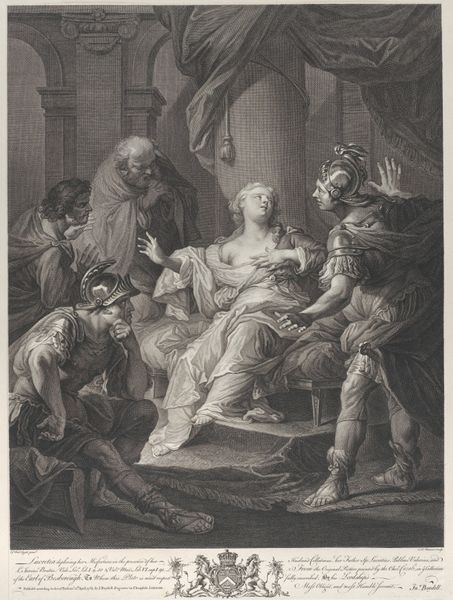
Copyright: Public domain
Editor: Here we have Wilhelm von Kaulbach's 1864 print, "Marie Zu Hohenlohe." The composition with so many figures is striking and the subject seems very poised. What do you see in this piece, especially considering the historical context? Curator: Well, immediately, it's clear this isn’t simply a portrait. It functions as a staged historical tableau, doesn’t it? Kaulbach, a major figure in history painting, often used prints to disseminate his grand, politically charged narratives. Consider how the piece participates in constructing and reinforcing societal ideals. Editor: That makes sense. I can see it more clearly now. I am particularly interested in how this one might be considered a narrative rather than just a visual experience. Curator: Exactly. Think about the public role of portraiture in the 19th century. What narratives about nobility, power, and perhaps even femininity are being communicated? This image, reproduced and distributed widely, would have shaped public perception far beyond the circles of the Hohenlohe family. Notice how the clothing styles represented here suggest different historical periods, a typical Romantic strategy to imbue the present with the gravitas of the past. Who is meant to look at whom here? Editor: Oh, it's so interesting to think about it being mass produced like that. With photography already available, it feels very different than painting an oil painting just for the family! Now that you point it out, is there something about history being revised here? Curator: Precisely. This print serves as a reminder of how art has long played a role in defining our cultural memory. Seeing art as more than just the family, as cultural construction, shifts my perspective. Editor: I totally agree. Thanks!
Comments
No comments
Be the first to comment and join the conversation on the ultimate creative platform.
